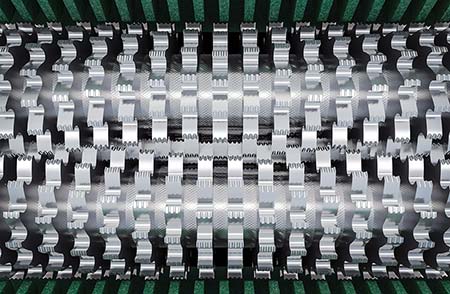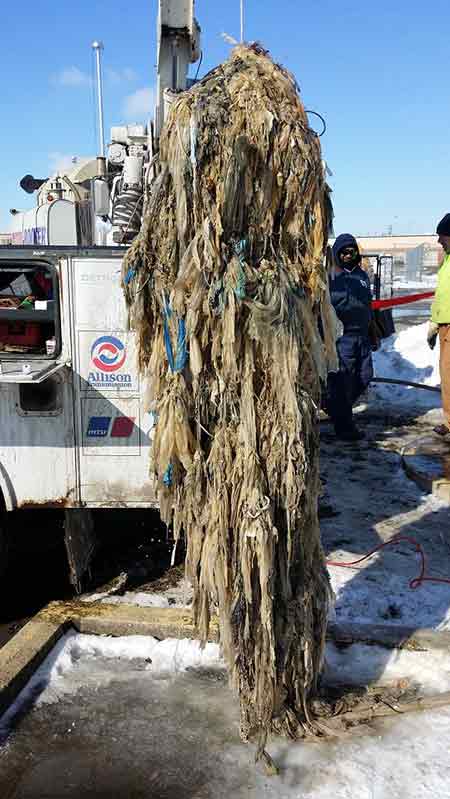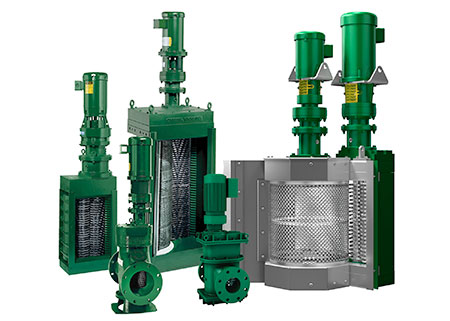
 IMAGE 1: Example of a ragball created by wipes and other waste that cannot be broken down properly. (Images courtesy of JWC Environmental)
IMAGE 1: Example of a ragball created by wipes and other waste that cannot be broken down properly. (Images courtesy of JWC Environmental)While toilet paper made a welcome return to retail shelves after the initial pandemic panic in the United States, the wipes market continues to flourish. Revenues are projected to grow from $35.2 billion in 2019 to $43.5 billion in 2023, according to the Wipes Global Market Report 2020-30. With heightened attention to cleanliness and sanitation in homes, schools, commercial businesses, restaurants and retail establishments due to COVID-19, the demand for wipes is expected to see substantial growth over the next several years. The wipes problem does not seem to be going away anytime soon.
News reports of sewer pump clogs due to personal care and household wipes along with other nonflushable materials—including masks and gloves—appear around the world on almost a daily basis. In one instance, all four pumps at a Florida wastewater pumping facility were simultaneously clogged with wipes. At a pumping station in Melbourne, Australia, a wipes-induced clog was discovered that weighed 2 tons and took nine hours to dislodge and remove. In 2017, it took crews nine weeks to remove a 130-ton clog from London’s sewers.
Wipes, paper towels, tissue and other materials do not disintegrate in the sewer like toilet paper. Typically, wipes are composed of fabric blended with plastic resins including polyester or polypropylene that are not biodegradable. Essentially, they are indestructible pieces of plastic. Wipes and other materials collect on pumps causing clogs, and they can also mix with fats, oils, grease and other sewage to form fatbergs in pipes. Pumps in the sewer system are not designed to pass these large solids, which leads to the accumulation of material and an eventual clog. The costs to remove these clogs is significant in both personnel and equipment (such as high-pressure water jets, vacuum tanker trucks and cranes), and are commonly passed to customers. A moderately sized, single clog can cost tens of thousands of dollars.
So, what can be flushed? Only the 3Ps should be flushed—pee, poo and (toilet) paper. Of course, what actually gets flushed is whatever someone can flush down the toilet without immediate consequences, whether it is wipes, masks, hair or the occasional children’s toy.
 IMAGE 2: Closeup of a wipes grinder
IMAGE 2: Closeup of a wipes grinderShredding wipes into long strips was not always enough to prevent clogs. These long strips could reweave into clumps when mixed with hair and grease, therefore still clogging pumps and pipes. However, grinder pump technology can shred the materials wastewater systems are not designed to handle. Instead of long strips, the grinder pump shreds wipes into a confetti that is too small to reweave into clumps, allowing equipment to continue to run efficiently.
Pumps that are not outfitted with a grinder that can thoroughly shred wipes are likely to experience higher than usual runtimes since the pump is working overtime to try and clear the clog. This can increase usage and cause wear and tear on the pump, as well as an increase in electrical costs. To help combat the wipes crisis, some municipalities are running public awareness campaigns to educate customers. While these campaigns have proven effective, they are expensive and lose their impact once the campaign ends.
In addition, lawsuits are popping up around the world against wipes manufacturers. Consumer-based class-action lawsuits have been filed against wipes manufacturers for damage done to homes caused by homeowners flushing wipes they thought were safe to flush but resulted in clogged pipes and sewage backups inside homes.
Local and state municipalities are demanding that wipes manufacturers relabel their products. They want to see changes to wipes packaging that would list nondispersible wipes (meaning those that will not breakdown in the sewer like toilet paper) as disposable and something that should not be flushed.
The term flushable means something can be flushed but misleads consumers into thinking that it is safe for their homes’ pipes and local sewer systems. For those products that claim to be dispersible, municipalities want to see third-party laboratory tests that prove products are dispersible, and not merely flushable, and that all products are labeled accordingly.
 IMAGE 3: Grinder pump technology
IMAGE 3: Grinder pump technologyIn 2019, the Australian Competition and Consumer Commission (ACCC), a consumer watchdog group, filed a lawsuit against a major wipes manufacturer claiming that wipes were not suitable to be flushed because they caused harm to the sewage system. While the Australian court agreed “there was ample evidence that ‘wipe’ products generally are a significant management problem for municipal sewerage systems, impairing the function of infrastructure and increasing maintenance costs,” they found that the ACCC did not demonstrate that the manufacturer’s specific wipe had caused harm to, or inflicted cost on, any single municipal system. The ACCC filed an appeal and lost in June 2020. More wipes mitigation efforts are expected to continue to unfold.
Wastewater treatment is an essential service by any definition. Therefore, the utility crews who normally clear pump clogs and remove fatbergs will remain on the job as the COVID-19 pandemic stretches on, even as cities, counties and states encourage people to limit interaction, work from home when possible and, in some areas, shelter in place. Everyone can make wastewater treatment crews’ jobs easier by flushing only the 3Ps, so they do not need to unclog pumps and clean out fatbergs.

